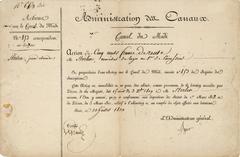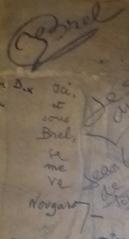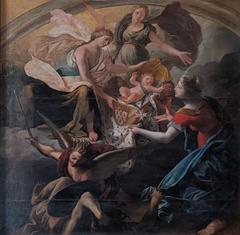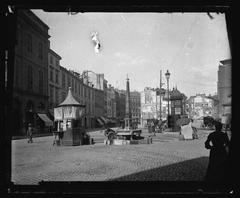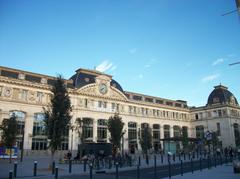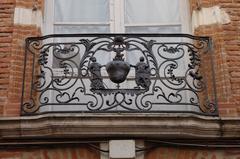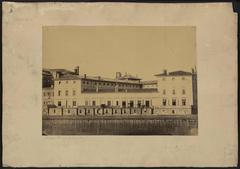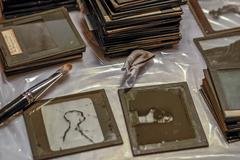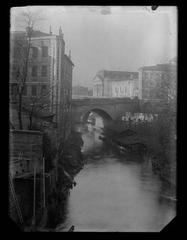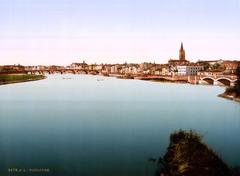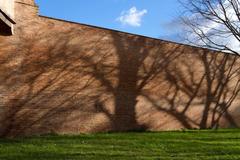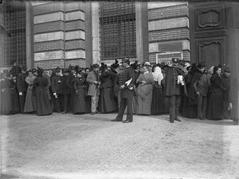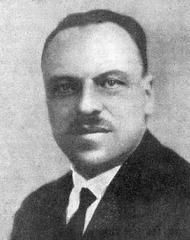Visiting Immeuble De Seube, Toulouse, France: Complete Guide (Tickets, Hours, Tips)
Date: 03/07/2025
Introduction
Situated in the vibrant heart of Toulouse, the Immeuble de Seube is an architectural gem that weaves together the threads of the city’s history, artistic innovation, and urban identity. Commissioned in the early 20th century by the Seube family, this building stands out for its creative pastiche of medieval, Renaissance, and Art Nouveau styles, while using Toulouse’s iconic pink terracotta brick. Designed by Henri Rachou and Jean Larroque, the Immeuble de Seube both honors the city’s heritage and exemplifies its openness to new artistic currents (Monumentum; Observing Leslie).
Though primarily private, the building is a focal point for architecture lovers and history enthusiasts, and its elaborate facade and ingenious interior features—such as repurposed ancient sarcophagi fireplaces and scholarly Latin inscriptions—invite admiration from all who pass by (Archives Toulouse; Gralon). The Immeuble de Seube’s partial Monument Historique status and inclusion in Toulouse’s protected heritage area ensure its ongoing preservation (POP Culture; Toulouse Métropole).
This guide provides a detailed overview of the Immeuble de Seube’s history, architecture, visitor information, accessibility, nearby sites, and practical tips to help you make the most of your visit.
Table of Contents
- Origins and Construction
- Architectural Significance and Features
- Visiting Information: Hours, Tickets, and Accessibility
- Historical Events and Restoration
- Conservation and Heritage Status
- Nearby Attractions and Travel Tips
- Frequently Asked Questions (FAQ)
- Visual Suggestions
- Summary Table: Key Facts
- Conclusion and Call to Action
- Sources and Further Reading
Origins and Construction
The Immeuble de Seube was commissioned by the Seube family at the start of the 20th century, intended as a home for their three daughters (Monumentum; Gralon). Henri Rachou, a painter and conservator, and Jean Larroque, an entrepreneur, led its design and construction. Their collaboration resulted in a building that is both whimsical and scholarly, blending local tradition with creative flourishes (POP Culture).
Architectural Significance and Features
Facade and Ornamentation
- Materials: The base alternates brick and pebble, echoing regional construction techniques.
- Decorative Elements: Portals adorned with fleurons and pinacles; twin (géminées) and mullioned windows; lintels with crossettes; faux machicolations and friezes reminiscent of medieval fortifications (Archives Toulouse).
- Ironwork: Art Nouveau-style balconies with sinuous, nature-inspired motifs (Observing Leslie).
- Color Palette: The signature pink brick emphasizes Toulouse’s identity as “La Ville Rose”.
Interior Elements
- Repurposed Historic Materials: Early Christian sarcophagi serve as fireplaces; Latin inscriptions enhance the scholarly atmosphere (Monumentum; Archives Toulouse).
- Structural Innovations: Use of reinforced concrete and steel frameworks enabled larger windows and more open interiors.
Stylistic References
- Medieval and Renaissance Features: Twin windows with sculpted capitals, stone mullioned windows, and faux machicolations reference the city’s architectural evolution from the 13th to 17th centuries (Archives Toulouse).
- Art Nouveau Influence: Decorative ironwork and natural motifs reflect early 20th-century trends.
Visiting Information: Hours, Tickets, and Accessibility
Public Access:
- The Immeuble de Seube is privately owned; there is no regular public access to the interior.
- Exterior viewing is available year-round from the street.
Special Events:
- Interior access is occasionally offered during the European Heritage Days (Journées Européennes du Patrimoine) in September, often accompanied by guided tours (Monumentum).
- Check the Toulouse Tourism website or the city’s cultural event listings for updates.
Tickets:
- No tickets are required to admire the exterior.
- Guided tours (when available) are typically free or low-cost.
Accessibility:
- The street-level facade is accessible for wheelchair users.
- Interior access during special events may be limited; inquire in advance about accessibility accommodations.
Historical Events and Restoration
- 1980 Fire: A significant fire in May 1980 caused damage; restoration efforts preserved both original and reused elements (POP Culture).
- Preservation Status:
- Listed as a partial Monument Historique since December 18, 1981, protecting facades, roofs, staircase, and fireplaces (Monumentum; POP Culture).
- Included in the Site Patrimonial Remarquable, under the Plan de Sauvegarde et de Mise en Valeur (PSMV), ensuring its long-term conservation (Toulouse Métropole).
Conservation and Heritage Status
- Restoration overseen by the Direction du Patrimoine de Toulouse Métropole and the French Ministry of Culture (DRAC).
- Documented in national heritage databases for ongoing research and protection (POP Culture).
- Regularly featured in local heritage inventories and open to the public only during select cultural events.
Nearby Attractions and Travel Tips
Within Walking Distance:
- Capitole de Toulouse: The city’s neoclassical town hall and symbolic heart.
- Basilique Saint-Sernin: A UNESCO-listed Romanesque basilica (Travelsewhere).
- Musée des Augustins: Museum of fine arts in a former convent.
- Musée Saint-Raymond: Archaeology museum with Roman collections.
- Hôtel d’Assézat – Fondation Bemberg: Renaissance mansion with art collections (PlanetWare).
- Pont Neuf: Oldest bridge in Toulouse, ideal for scenic views (Taste of Toulouse).
Food & Markets:
- The Victor Hugo Market offers a taste of local gastronomy.
Getting There:
- Metro: Capitole and Jean Jaurès stations are nearby.
- Bus: Numerous lines serve the area.
- Parking: Paid lots at Parking Jeanne d’Arc and Parking Victor Hugo.
Tips:
- Visit in late afternoon for optimal lighting on the pink brick.
- Respect resident privacy; exterior photography is welcome.
Frequently Asked Questions (FAQ)
Q: Can I visit the interior of Immeuble de Seube?
A: Public interior access is only possible during special events like European Heritage Days.
Q: Are tickets required?
A: No tickets are needed for exterior viewing; guided tours during special events may require a reservation.
Q: Is the building accessible for people with reduced mobility?
A: The exterior is accessible; inquire in advance about interior accessibility during open days.
Q: What nearby attractions can I visit?
A: Capitole, Saint-Sernin, Musée des Augustins, Hôtel d’Assézat, and Pont Neuf are all within walking distance.
Q: Are guided tours available?
A: Occasionally, via the Toulouse Tourist Office or during heritage events.
Visual Suggestions
- Facade Photography: Capture the pink brick and ornate ironwork during golden hour (alt: “Immeuble de Seube, Toulouse, pink brick façade”).
- Detail Shots: Focus on decorative elements like windows, balconies, and stone carvings.
- Nearby Landmarks: Include images of the Capitole, Saint-Sernin, and Pont Neuf for context.
- Interactive Maps: Enhance your itinerary with a digital map of Toulouse’s historic center.
Summary Table: Key Facts
| Aspect | Details |
|---|---|
| Year of Construction | Early 20th century (c. 1900–1910) |
| Architects | Henri Rachou, Jean Larroque |
| Monument Historique Status | Partial listing since 1981 (facades, roofs, staircase, fireplaces) |
| Restoration | Major works after 1980 fire |
| Ownership | Private |
| Public Access | Exterior only; interior during heritage events |
| Urban Heritage Context | Within Site Patrimonial Remarquable (SPR), under PSMV |
| Conservation Oversight | Toulouse Métropole, DRAC |
| Notable Features | Pastiche architecture, ancient fragments reused, Latin inscriptions, local folklore |
Conclusion and Call to Action
The Immeuble de Seube is a striking symbol of Toulouse’s architectural creativity and respect for heritage. While access to its interiors is rare, its intricate facade and fascinating history make it a must-see for any visitor to the city’s historic center. Plan your visit around European Heritage Days for the chance to explore inside, or simply enjoy its artistry from the street as part of a broader walking tour.
For up-to-date information on guided tours, events, and access, consult the Toulouse Tourist Office. Download the Audiala app for curated tours and insider tips, and follow our social media channels for the latest on Toulouse’s living heritage.
Sources and Further Reading
- Monumentum – Immeuble de Seube Monument Historique
- Observing Leslie – Visiting Toulouse: What to Expect, See, and Do
- Toulouse Tourism – Practical Information
- Musée du Patrimoine – Immeuble de Seube
- POP Culture – Heritage Documentation
- Toulouse Métropole – Urban Heritage and Conservation
- PlanetWare – Toulouse Tourist Attractions
- Travelsewhere – Visiting Toulouse
- Taste of Toulouse – Top Tourist Attractions

